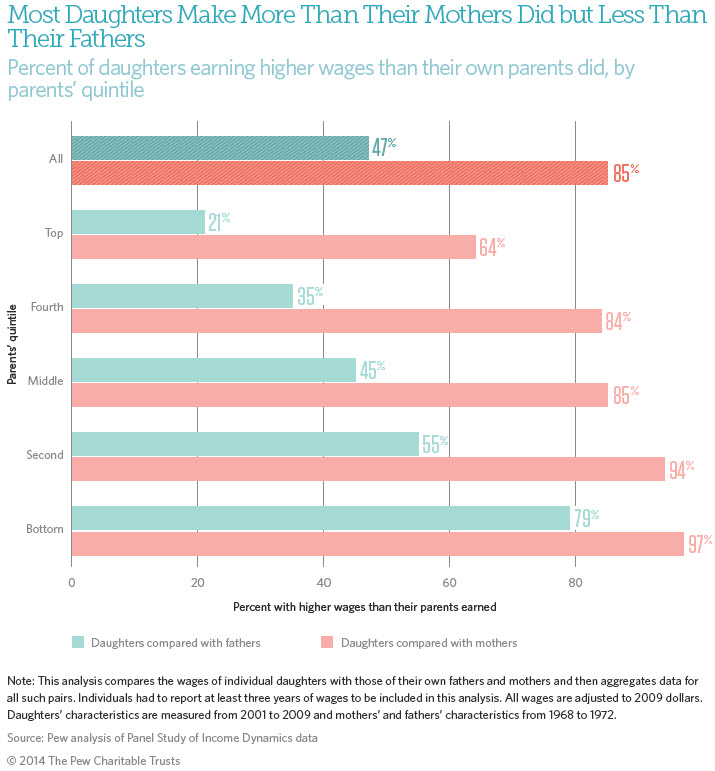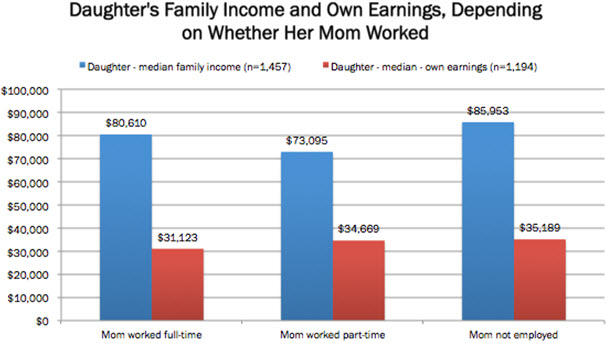Social mobility is moving up the political agenda, but in a fairly masculine fashion. Much of the intergenerational data relies on father-son comparisons; a disproportionate number of the “rags to riches” stories involve men. A useful corrective come this week in the form of a new report about women’s mobility from Pew’s Economic Mobility Project. The paper compares Baby Boomer women to their parents in terms of wages, hours worked, and where they end up in the income distribution. Six findings stand out:
1. Today’s working women (henceforth described as “daughters”) have higher wages than their mothers – but do not have higher wages than their fathers. Men have higher wages than both their fathers and their mothers.
2. The poorest women are doing best. 80% of daughters raised in the bottom quintile have higher wages than their fathers did. (h/t Scott Winship)

3. “Men’s wages remain more important to increasing couples’ family income,” despite “women’s significant generational gains.” Brad Wilcox talks about this finding in greater detail in the Atlantic, arguing that the class gaps in marriage explain why women’s higher individual incomes at the bottom haven’t translated to family incomes at the bottom being higher.
4. Women who grew up in households where their mother did not work actually have the highest family incomes today—but not because they themselves earn more. Daughters’ individual incomes do not vary significantly by mother’s work status, but family income does—suggesting that daughters whose mothers didn’t work have higher earning husbands. (Catherine Rampell discovered this by asking Pew to split out their analyses by mothers’ labor choices.) Perhaps those raised in more traditional settings are more likely to replicate a traditional division of labor?

5. There’s a lot of stickiness at the top and bottom of income distribution—but women suffer more than men at both ends. Women born at the bottom are more likely to remain in the bottom two quintiles than men, but men born at the top are more likely to stay at the top than woman born at the top.
6. More work for women has been good for mobility, particularly for those at the bottom. Pew looked as what would happen to mobility if women’s wages increased as they have over the past forty years, but women’s labor force participation (i.e., hours worked) were the same as in their mothers’ generation. They found that increased work hours resulted in an 11 percentage point increase in upward mobility for women born at the bottom.
The Brookings Institution is committed to quality, independence, and impact.
We are supported by a diverse array of funders. In line with our values and policies, each Brookings publication represents the sole views of its author(s).




Commentary
Women and Social Mobility: Six Key Facts
April 3, 2014